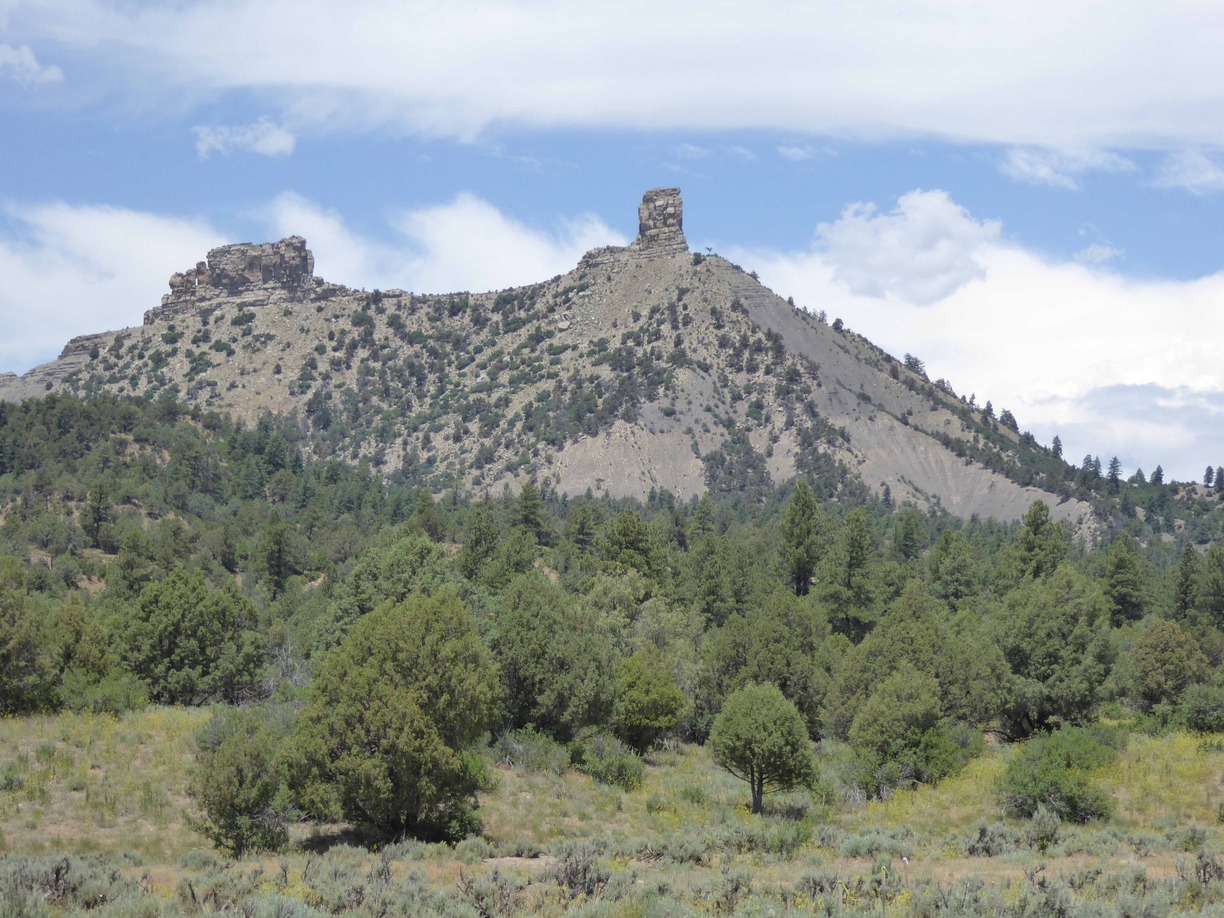The Local newsletter is your free, daily guide to life in Colorado. For locals, by locals.
Tucked into the forested foothills of the San Juan Mountains is Chimney Rock National Monument, a little-known area that features a fascinating archaeological complex built by ancestors of modern Puebloan tribes. Constructed between about A.D. 1000 and 1100, the development, which hosts dozens of archaeological sites, is nestled beneath two sandstone pinnacles whose blocky, smokestack shapes give the monument its name—and served an important astrological purpose.
Of the dozens of features in the 4,700-acre monument, by far the most important is the Great House Pueblo, an enormous, square complex built with distinctive features, including pecked rock faces, straight walls with square corners, and “chinking”—tiny stones that fill the gaps between the mortar, adding structural stability—that identify it as an outlier of the so-called “Chacoan” civilization that flourished in the arid Southwest for several hundred years.

The Great House Pueblo is the largest, most elaborate, and the highest structure at Chimney Rock, and took a serious amount of effort to build. It’s composed of more than six million hand-hewn sandstone blocks cemented with a mortar mixed from local clay and anchored with wooden beams, all of which had to be hauled uphill to its spectacular perch high on the mesa beneath the pinnacles. Tree-ring dates from wooden beams indicate that the pueblo was built in at least two stages, one around AD 1076 and the other AD 1093.
Why would the Ancestral Puebloans have gone to so much effort? The current theory is that the pinnacles frame several astronomical alignments, including the summer solstice, the equinoxes, the Crab Nebula, and most famously, the northern lunar standstill. During this phenomenon, which occurs every 18.6 years, the moon approaches its most northern position on the horizon—an event which, when viewed from the Great House Pueblo, causes the moon to rise between the site’s two chimney rock pinnacles. Because the timing of this standstill coincides with the pueblo’s two known years of construction, archaeologists believe the pueblo was intentionally built in this spot and that visitors may have traveled long distances to stay in the pueblo and observe the moonrise for themselves.
Although the next standstill won’t occur until 2022, you can still participate in a variety of programs led by U.S. Forest Service volunteers, including full moon hikes to the Great House, complete with spine-tingling Native American flute music; twice-monthly archaeoastronomy programs; solstice and equinox programs, during which you can see two sunsets in one morning; and daily guided tours from mid-May through the end of September.
Visit: The national monument is located along Highway 151, about 16 miles west of Pagosa Springs. The only access is through guided tours ($10–20); for more information visit chimneyrockco.org or call 970-883-5359 (mid-May through September), or 970-731-7133 (October through mid-May). To make reservations for special programs, call 877-444-6777.








